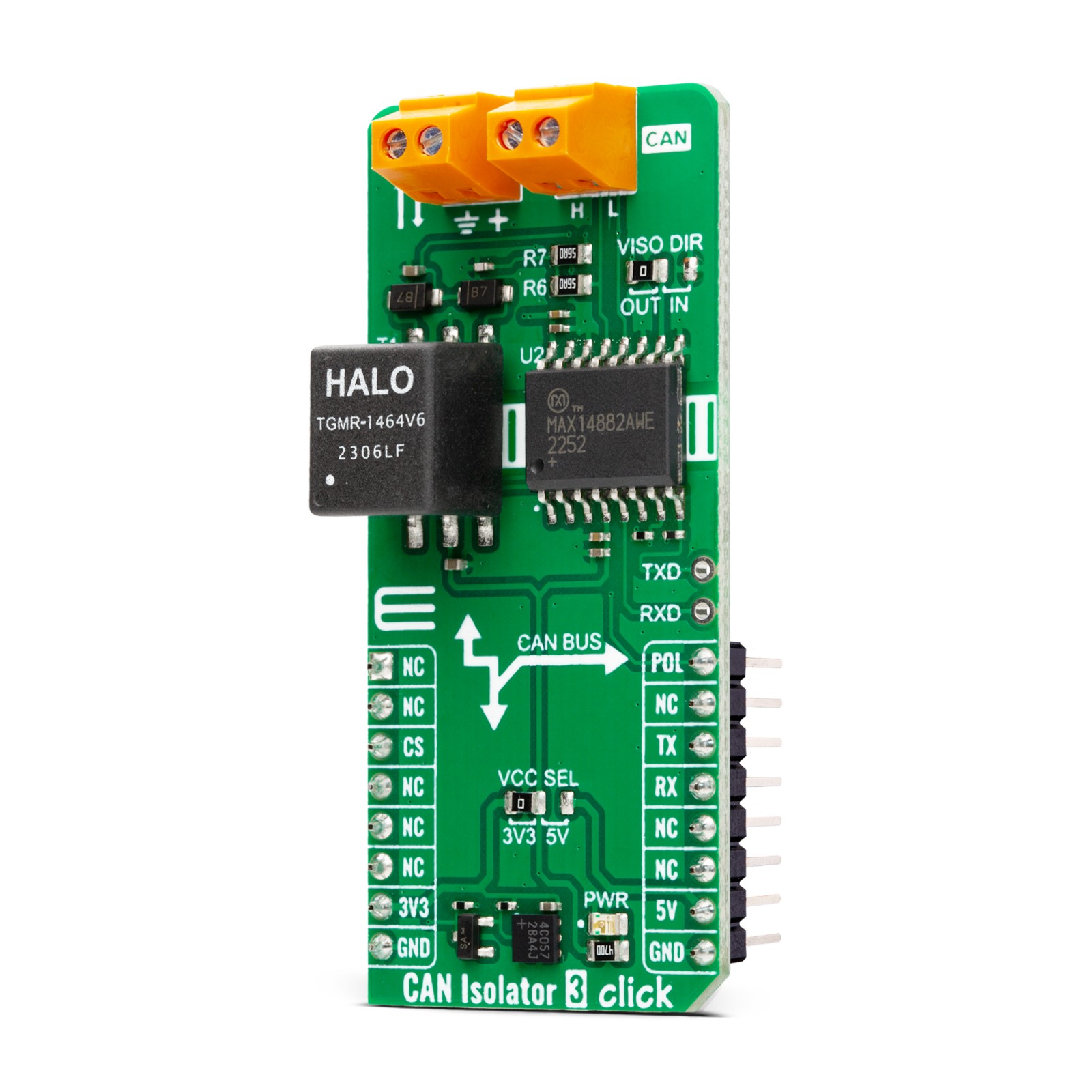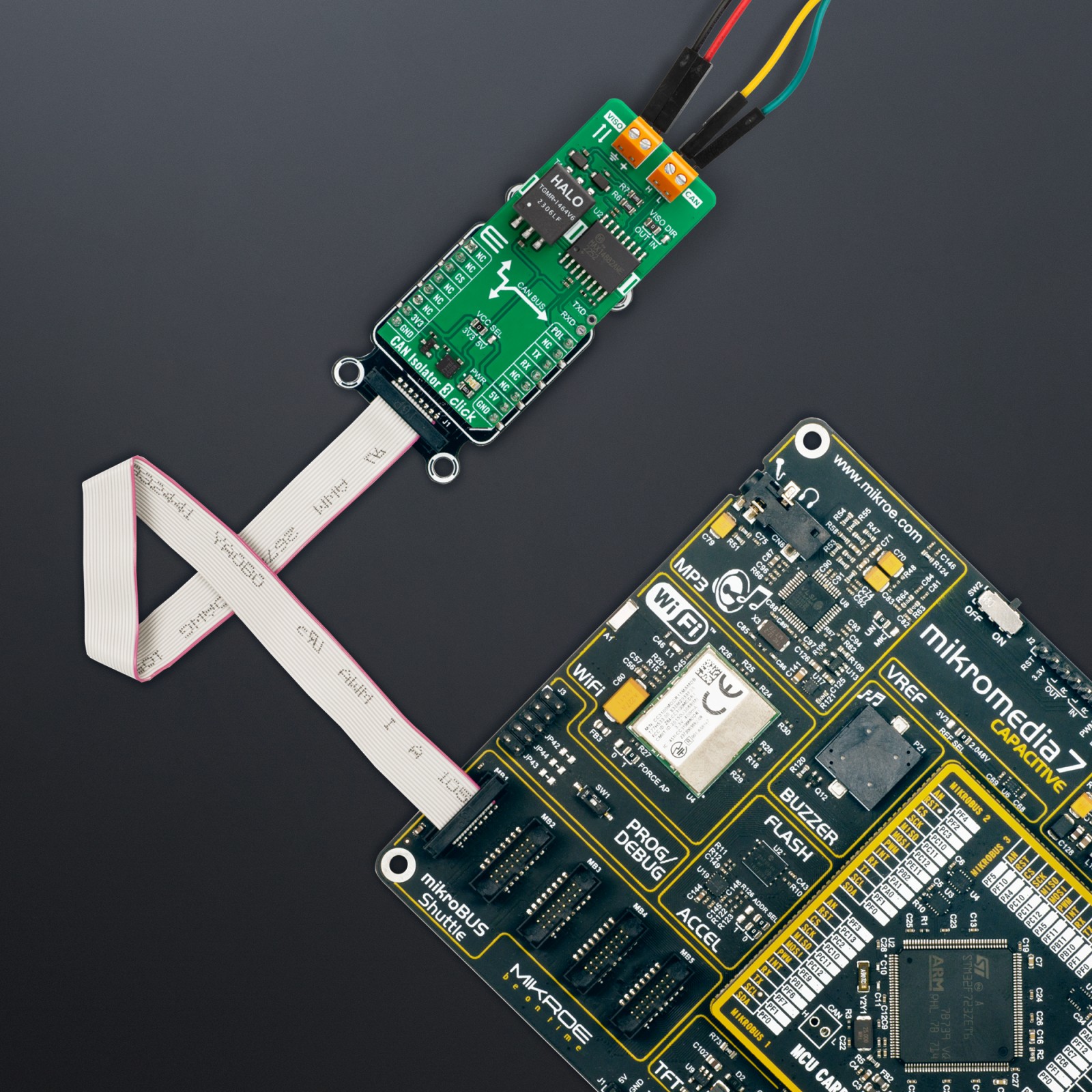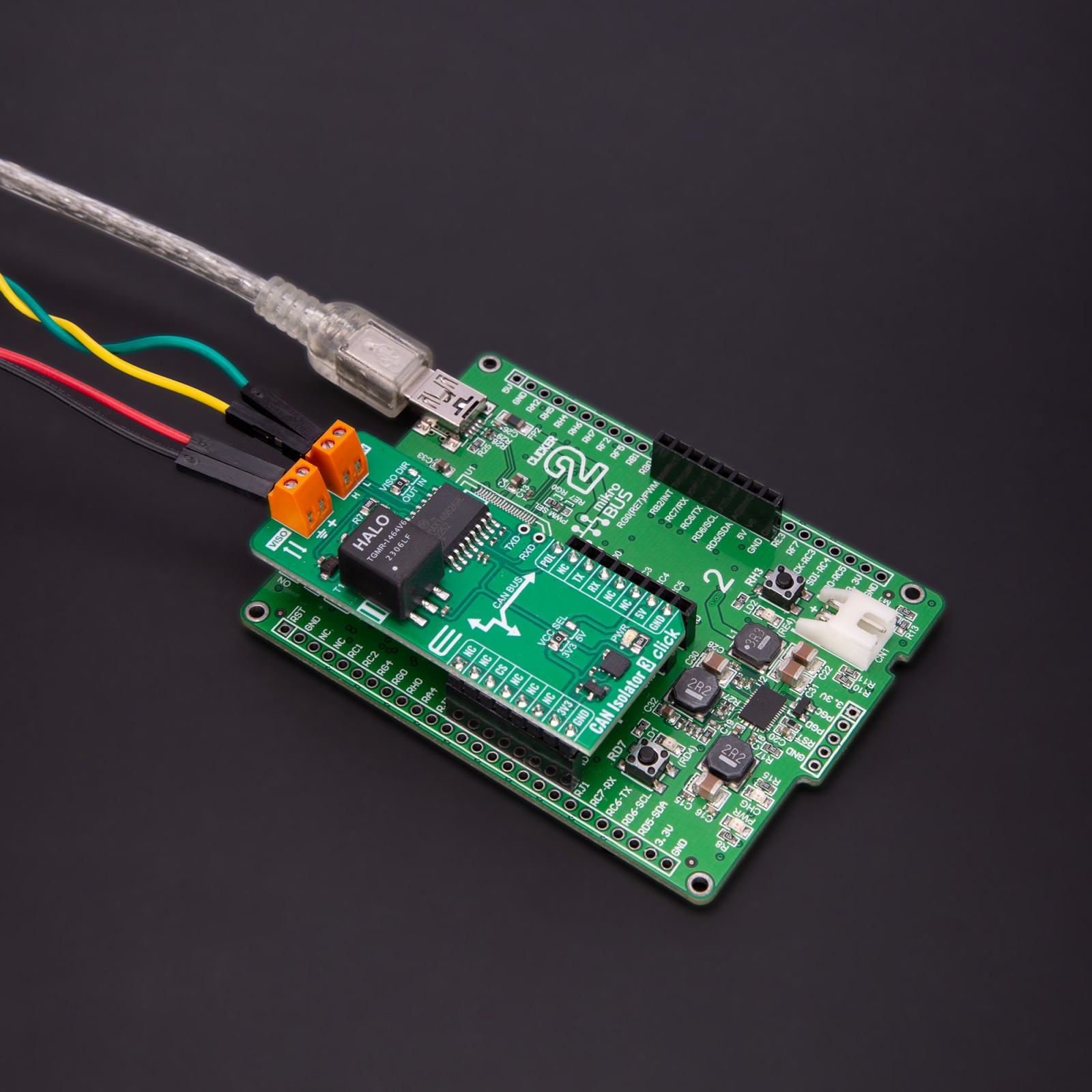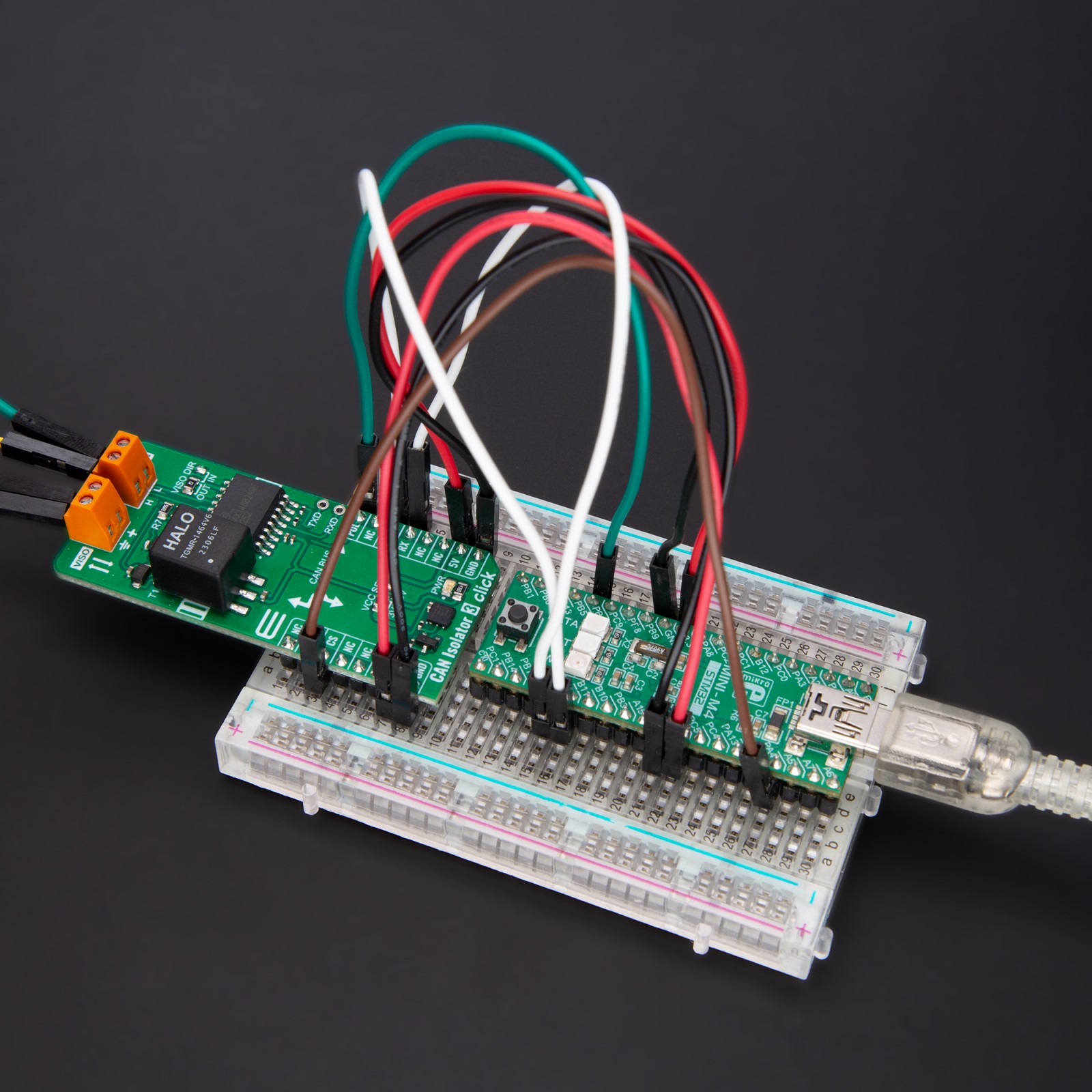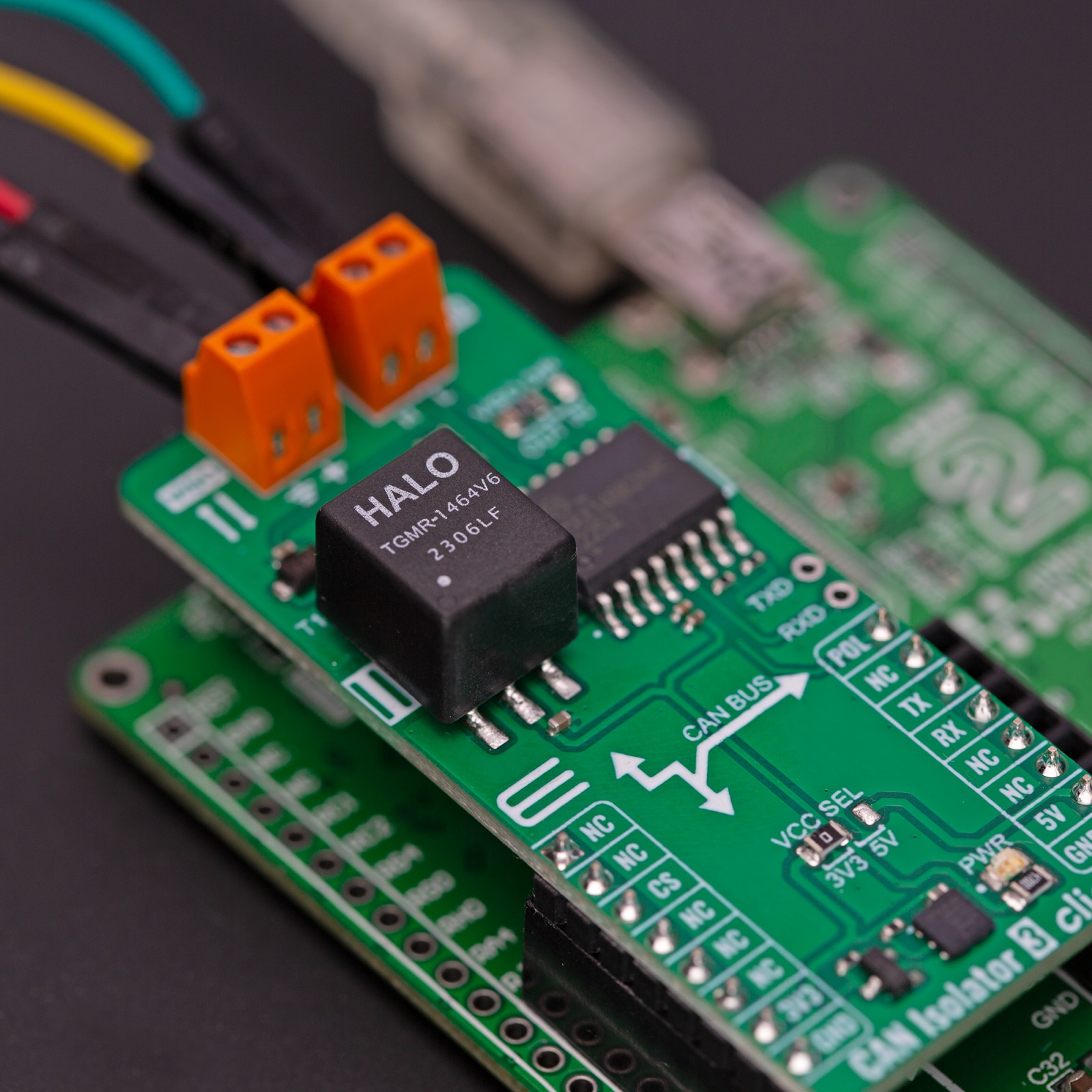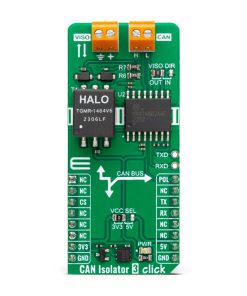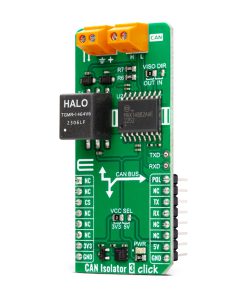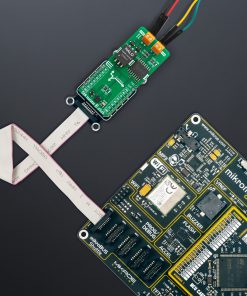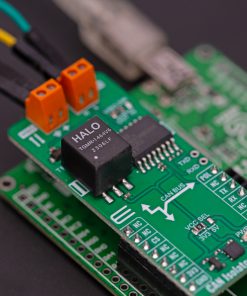CAN Isolator 3 Click
R995.00 ex. VAT
CAN Isolator 3 Click is a compact add-on board that provides isolated CAN communication. This board features the MAX14882, an isolated CAN transceiver with an integrated transformer driver from Analog Devices. It is galvanically isolated between the device’s CAN-protocol controller side (TDX, RDX) and the physical wires of the CAN network (CANH, CANL) cable-side/bus-side of the transceiver. The MAX14882 provides up to 5kVRMS of galvanic isolation for 60 seconds and a continuous working voltage of up to 848VRMS while operating at the maximum high-speed CAN data rate of 1Mbps. Also, one of the most essential features of this board is the possibility of its independent generation of isolated voltage. This Click board™ makes the perfect solution for the development of automation, industrial controls, HVAC, switching gears, and more.
CAN Isolator 3 Click is fully compatible with the mikroBUS™ socket and can be used on any host system supporting the mikroBUS™ standard. It comes with the mikroSDK open-source libraries, offering unparalleled flexibility for evaluation and customization. What sets this Click board™ apart is the groundbreaking ClickID feature, enabling your host system to seamlessly and automatically detect and identify this add-on board.
Stock: Lead-time applicable.
| 5+ | R945.25 |
| 10+ | R895.50 |
| 15+ | R845.75 |
| 20+ | R813.91 |


